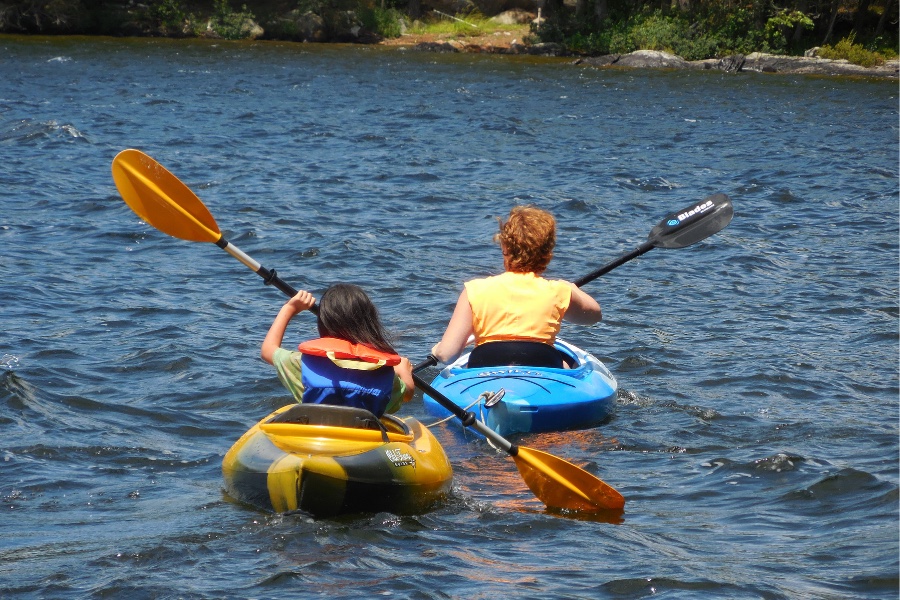
Living in central Ontario, I admit, I might relish hibernation a little too much. My default winter habits do not prepare my body well for the springtime season of lighter movement.
Imagine regularly trudging your way through a lot of snow and walking on icy everything. Think of driving a lot more than usual and hunkering down, not even leaving the house on the coldest days. You get the picture.
However, as soon as spring has sprung I want to be in my kayak.
As nature moves out of the cold, dark winter toward spring, the river roars, seedlings break through recently frozen earth, birds nest. Nature makes it look stress-free, but for many of us, it’s not as easy to transition gracefully from winter to spring. We may find ourselves feeling stiff and sluggish, and need a little push to get moving.
How to get back in shape for the first spring kayaking adventure…
Envisioning what I want my first kayak adventure to feel like is a great start. My imagination helps direct me to the self massage, stretching, and strength exercises I need to get my body ready.
I picture myself fluidly, gracefully, strongly gliding in and out of my kayak in all kinds of situations (a slippery riverbank, a rocky shoreline, a beaver dam). I see myself rolling my kayak with confidence. The practical side of me adds the picture of me hoisting my dripping kayak onto my car after being out on the water.
Then here at home, while playing around on my yoga mat, I explore similar movements to get an honest assessment of where I am starting from. This helps me shape my practice to prepare for that first day out on the water.
Prepare the psoas to help you roll, swivel and balance
To begin, I give my psoas some much needed TLC, adding the daily practice of rolling on a Roll Model® Coregeous® ball – to help relax and realign my tight psoas.

The psoas is the deepest of our core muscles, and is often considered our most important postural and structural muscle. Its related functions include posture, movement, balance, breath and energy.
If tight, the psoas will definitely inhibit range of motion in one or both hips, put strain on the lumbar spine and the knees. As we spend a lot of time sitting (even in the kayak) this muscle can almost always use more attention! I began rolling out the psoas before kayak season and will continue during the kayaking season using a Coregeous® ball.
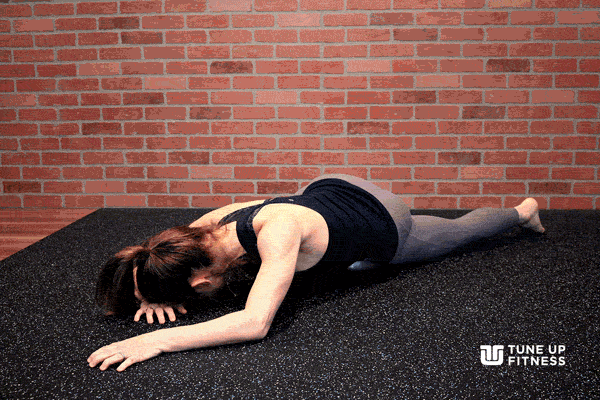
Psoas Stretching Technique:
- Start by lying face down, and place the Coregeous® ball at the center of your pelvis. Begin slow, full abdominal breathing, extending the exhale. Take some time here.
- Moving to your forearms, add some gentle movement side to side & up and down with our body.
- Slide the Coregeous® ball to the inside of the left front hip bone, left leg remains extended. Flexing your right knee, move it up beside your right hip in a “1/2 frog” position.
- Slide your hands back, lifting your chest away from the floor into a backbend, deepening the facial release along the whole front left side of the body.
- To finish it off, turn your face to the right and flex your left knee–creating more length in your left psoas.
- Repeat on the other side.
A Kayak-Ready Coreso
Another practice to get ready for the water is Gate pose. Gate is a low impact pose introducing some novel movement for the spine and hips.
Playing with balance and strength by moving in and out of the pose, rotating side-to-side and adding a twist, all while maintaining a strong core (or “coreso” as we sometimes call it in Tune Up Fitness®), is a great way to mimic getting in and out of a kayak in any circumstance.
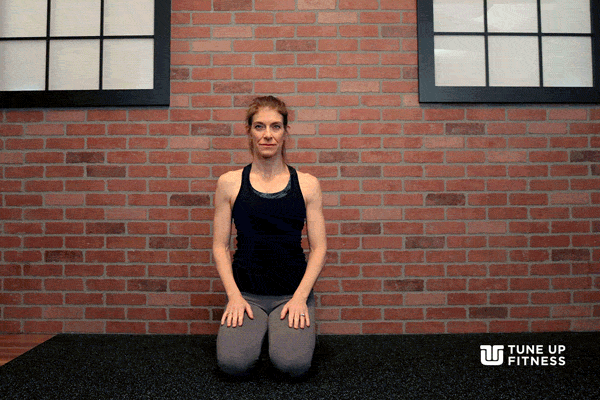
Gate Pose:
- Begin in Sitting Seza (sitting up on your heels with toes tucked underneath seat). Stand up on shins and float your left leg out to the side, left foot flat on the floor. Check to see that the arch of the foot is in line with the right knee
- Come up tall onto your right knee, press left foot into the floor, your right hip flexors facing forward, firm muscle to bone to stabilize the right leg
- Sail your right arm up overhead, taking a moment here to activate your abdominal muscles, your gluts, and enhance the core engagement.
- While keeping the core fully engaged, slide your left hand down your left thigh, reach the right arm up and then over toward the left leg. Now improvise simple flowing movements with the upper arm and spine, finding your edges of stretch, strength and grace. Finish by scooping up your head with your top and and rotating your face toward the sky.
- Bonus: Add in blocks placed in different places on the mat mimicking different terrain.
- Rest back in a child’s pose, and then return to Sitting Seza and repeat on the other side.
Serratus to Hip Power Combo
Lizard pose stretches the psoas, releases tight hamstrings, hip flexors, quadriceps and adductors. Plus it awakens the connection between the back core and the hips.
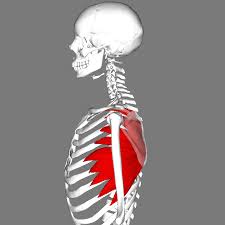
By activating to the serratus anterior, Lizard becomes a fun way to improve the stability in your shoulders and give you access to extra strength needed at the end of the day to hoist a kayak overhead.
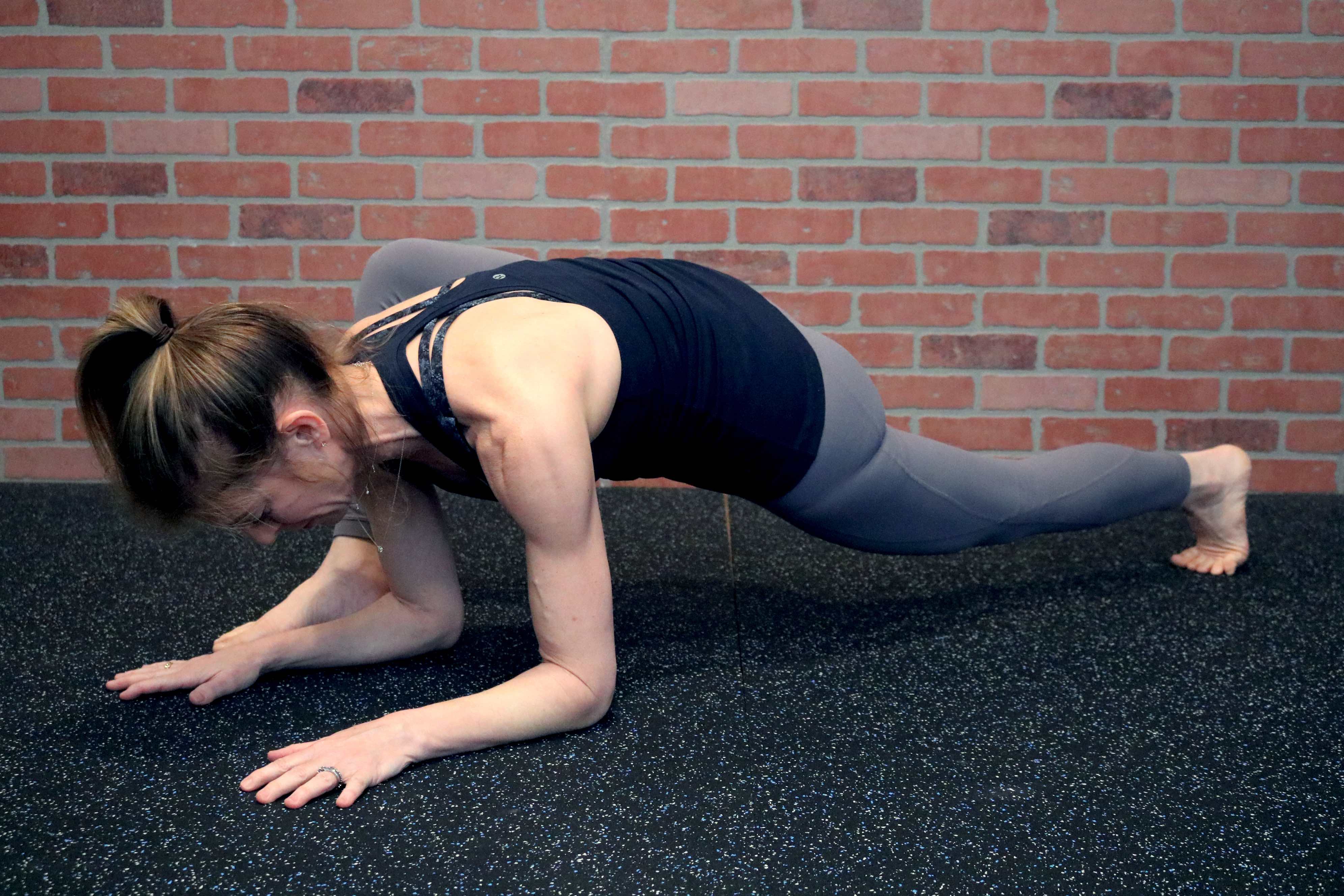
To do Lizard with active serratus anterior:
- Starting in table pose, step the right foot forward to the outside or your right hand and walk that foot to the outside edge of the mat, ankle and knee joints stacked, toes pointing forward.
- Come down onto your forearms, keeping shoulders joint-stacked over elbows (if you would like some support, put blocks under your forearms), torso long and core engaged
- For a deeper stretch, lift the back knee off of the mat, pressing through your back heel, lengthening the entire back leg.
- Add the power of the serratus anterior by protracting the shoulder blades, pressing your forearms strongly down into the ground (or blocks), and adding the action of sliding your shoulder blades down your back without actually moving your forearms
- Return to Table pose, bring the right foot forward and repeat on the other side.
Thanks so much for joining me for this paddle-prep practice. Every season brings new textures, colors, smells. I want to be outside playing in the woods or on the water in every season. Today I’m giving my body the fitness nourishment it needs now to fully enjoy and embrace the joys of springtime.
Related Article: The Confluence of Pain and Pleasure: Navigating the Currents of Adventure with Squirtboat Champion Jeff Lane
Learn more about our Therapy Ball Products and Programs
Interested in video and blog content targeted to your interests?
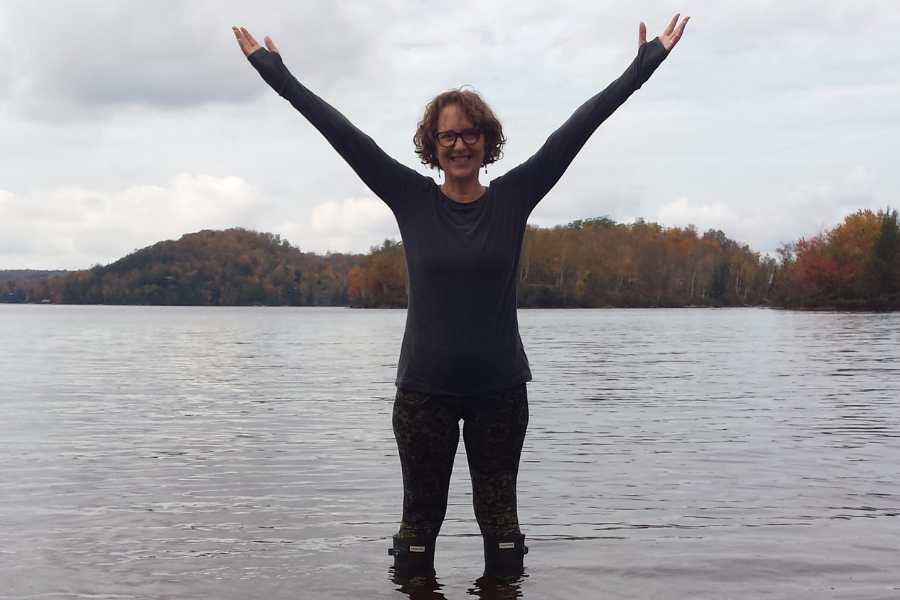


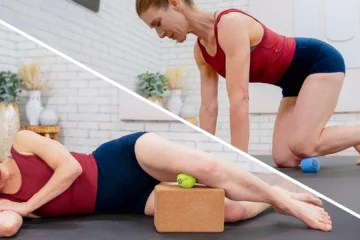
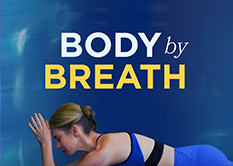



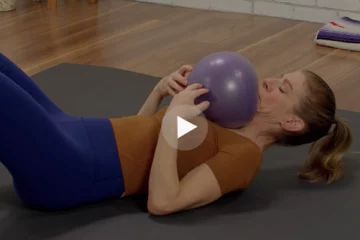
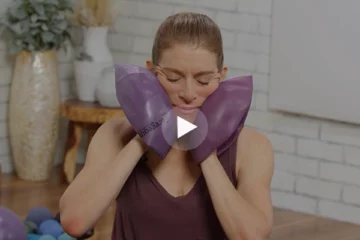


I just went kayaking for the first time in a couple of years, in a kayak that is new to me. I managed to get in OK, but with difficulty, but when it came time to exit the kayak, I fell in! Luckily water and air were both warm. When I read the title of the post I thought it would be all about arms and I envisioned Propellor arms. But you are totally correct in that what I REALLY need is loser body & core strength to get in and out of my kayak. Thank you for reminding me about these great exercises.
This was a perfect read for my upcoming canoe camping trip. I even sent it to the rest of my camping crew to test out and enjoy. Always a great idea to strengthen the muscles you know you’re going to need to prevent injury. Thanks for the tips.
Great tips for the beginning of kayak season. Testing out the Gate Pose really did give me a sense of muscles being used for getting in a small boat. thanks for these strengthening ideas.
I teach a Yoga Kayaking event series every summer, and this is totally giving me inspiration for changing it up this weekend! I can’t wait to try out these poses to prep me for my next paddle.
I’m glad to have read your article and tips prior to my day of kayaking. Thanks for the great tips!
I will kayaking next week and I realize that I am not fully ready. These exercises will help me a great deal. Thank you.
One of my best friends is a kayaking enthusiast and I cannot wait to share this with her!
Lovely results using the Psoas Stretching Technique Roll model method,
Also i would add two more steps in the sequence, in order to Check range movements prior a Re check after the stretching.
As a part time kayaker I hadn’t really appreciated the complexity and demands of the psoas in preparing for the season. Notably my attention was focused on my shoulders and upper back. I am excited to add these movements to my preparation for paddling and my general yoga practice. The dynamic psoas stretch with the use of the YTU coregeous ball is definitely going to become a favorite!
Thanks for sharing this article and your love for paddlesports! I love to Paddleboard on Lake Erie and winters here can also become sedentary. Also, I drive a lot so I appreciate the psoas stretch tutorial. I also have always had difficulty in lizard yet never really connected the action of the serratus anterior with the pose. Thanks for the info…
I love that YTU has provided the spring board for some many people to think about moving well in their daily lives – and not just on a yoga mat! Having been through this year’s long, cold and icy Southern Ontario winter, I relate to the desire to be outside and move now that the weather is better – and with the need to prepare the body accordingly! I will use this post as inspiration – and information – to continue to move into the Summer on the water on the West Coast with ease and injury-free!
I think that sometimes we might fail to warm-up or do some mobility work before activities that are more about the fun or adventure of it all — but is important! This is a good reminder. And we will enjoy the activity that much more when we are primed for movement. Thank you!
By studying the DOM you can get ready for any sport. Thank you for his poses!
Usefull for me … i will be prépared to go Back on water thanks
This is great! Love the poses – will try these for sure. Thanks Pam!
Thank you very much for these very relevant exercises and purely adapted to paddle sports. They will be very useful this summer.
wow, its beautiful, I had never seen the pose of Lezard as helping the connection of the back and hips but especialy in the stability of his shoulders. And Coregeous is my new best fiend!!!
I like kayaking, I’ll try these poses very soon!
I love the opportunity to explore the various muscles that are ended in water sport. I will try these rolling techniques to help me understand anatomy on a deeper level aswell as reach out to attempt kayaking for the first time to assess the effectiveness(which like everything else Tune up related will be very impactful.)
Such great blogs.
Thanks
Melaina Landriault
I live in Ontario too and I can relate! I too struggle in the spring because of my over-hybernation habbits. I do LOVE to cayak though and thanks for sharing these great moves and poses that will help me get back on the water! I am also always looking for new ways to work my psoas!
Our style of life today doesn’t help much the posas. Most of us has shortened this marvelous muscles keeping our bodies seated half of the day. This technique preparations are great to get a more healthier psoas and more mobile hip.
Springtime means also cycling and the psoas release after a long ride is a delight if you want to have a long season.
I love Kayaking. Will try these helpful poses.
Really like the psoas release technique. Going to give that a try. Also find the lizard with active serratus to be a practical way to increase ROM of psoas and Hamstring while improving stability of shoulders. Have many clients who like to hike and do various outdoor activities so thank you for the share.
Love these poses to help strengthen and stabilize the spine and shoulder blades. Enjoy your first kayak adventure of the year!
Fabulous article Pam. So thorough and yet so doable.
Very good piece Pam. I am excited to get out my paddle board.
I love lizard pose!
Thank you Pam ❤️
Really thorough and beautifully articulated piece. Great movement practices and nice simple details. Can’t wait to get onto the water!
Great article, thank you for sharing☺️
Great information Pam. Thank you for letting me know how to get into shape after these long winter months and back into my kayak.
Going to have to get out the ball and try that Psoas Releasing Technique. My psoas got excited just watching it!